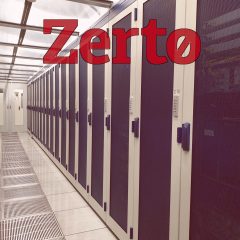Zerto Hyper-V to VMware
Zerto Hyper-V to VMware KB ID 0001805 Problem I’ve known this was possible for a while, I tried to set it up a while ago, but had a nightmare installing SCVMM so I threw my toys out of the pram and did something else. After a chat with a colleague the other week we have client who needs to do this (we are migrating them from Hyper-V into VMware). So I thought I’d revisit the subject, and this time everything went...
VMware Workstation – Error – ” Virtualized Intel VT-x/EPT is disabled”
KB ID 0000540 Problem Seen on VMware Workstation, when attempting to virtualise a product that IS a virtualisation hypervisor (ESX for example). Error: Virtualized Intel VT-x/EPT is disabled for this ESX VM. You will only be able to run 32-bit nested VMs. At first I (wrongly) assumed that I needed to enable something in the BIOS on my laptop, and searched though every page to enable some virtualization setting that was turned off....
VMware Jumpy /Erratic mouse on Server 2008 R2 Virtual Machine
KB ID 0000377 Problem Seen on Windows Server 2008 R2 running on VMware ESX/ESXi 4.0 and 4.1 Solution Firstly, I’m assuming you are running the latest version of VMware tools on the machine in question, this procedure was carried out with VMware tools version 8.3.2 and cures the problem. 1. On the affected VM Click Start > In the search run box type > devmgmt.msc {enter} 2. Expand “Display adapters” Right click...
Is Virtual Center 4.1 Supported on Windows Server 2008 R2?
KB ID 0000379 Problem ES! it is, if in doubt see the compatibility matrix. But you have tried to install it and seen an error? Error: This product can only be installed on the following 64-bit operating systems: Windows XP SP2 or above Windows Server 2003 Windows Server 2008 Solution Essentially this just a bad error message that bears no resemblance the the actual problem! The REAL REASON you are seeing this error is because you re...
Using Openfiler and vSphere ESX / ESXi 5
KB ID 0000380 Problem Openfiler is a free NAS / SAN prebuilt Linux distribution, that can provide iSCSI storage to your VMware environment, it’s ideal for small setups (This video was made with all the devices running in VMware workstation 7, on my laptop. That’s two ESXi servers, a vCenter server, and the Openfiler iSCSI target server). Solution Related Articles, References, Credits, or External Links Openfiler Thanks to...


